
ARTIFICIAL ORGANS
Scope & Guideline
Connecting Ideas and Innovations in Bioengineering.
Introduction
Aims and Scopes
- Mechanical Circulatory Support:
Research on devices such as left ventricular assist devices (LVADs) and total artificial hearts, including their design, functionality, and clinical outcomes. - Organ Preservation Techniques:
Studies focused on methods for preserving organs for transplantation, including machine perfusion technologies and the effects of various preservation solutions. - Biocompatibility and Hemocompatibility:
Investigations into the interactions between artificial devices and biological systems, including studies on blood compatibility and the prevention of thrombus formation. - Tissue Engineering and Regenerative Medicine:
Research on the development of engineered tissues and organs, including 3D bioprinting and the use of stem cells for organ regeneration. - Clinical Outcomes and Patient Care:
Evaluations of clinical practices, patient outcomes, and quality of life for patients receiving artificial organ support, with an emphasis on psychological and physical rehabilitation. - Innovative Technologies in Artificial Organs:
Exploration of new technologies and methodologies for the creation and optimization of artificial organs, including computational modeling and advanced materials.
Trending and Emerging
- Artificial Intelligence and Machine Learning:
There is a growing trend towards integrating AI and machine learning in the design and operation of artificial organs, optimizing performance and patient outcomes. - Wearable and Portable Artificial Organs:
Research on the development of wearable devices, such as artificial kidneys and insulin delivery systems, is gaining traction, reflecting a shift towards more patient-friendly solutions. - Personalized Medicine Approaches:
Increasing focus on tailoring artificial organ technologies to individual patient needs, including customized designs and treatment protocols, is emerging as a key area of interest. - Multisystem Organ Support Technologies:
Research that examines the synergy between different organ support systems, such as combining mechanical circulatory support with renal or respiratory support, is on the rise. - Regenerative Strategies and Biomaterials:
Innovations in biomaterials and regenerative medicine, including the development of scaffolds and extracellular matrices for tissue engineering, are becoming central themes in the journal.
Declining or Waning
- Traditional Hemodialysis Techniques:
Research on conventional hemodialysis methods appears to be declining as innovative dialysis technologies and alternatives gain prominence. - Basic Biomechanical Studies:
Studies that focus solely on the basic biomechanics of artificial organs without integrating clinical applications or advanced engineering techniques are becoming less prevalent. - Single-Organ Studies:
Research that focuses exclusively on individual organ systems without considering the interconnectedness of multi-organ support systems is waning. - Historical Perspectives on Artificial Organs:
While historical analyses provided valuable insights, there is less emphasis on retrospective reviews as the focus shifts toward current advancements and future directions. - Animal Models in Preclinical Research:
The reliance on traditional animal models for testing and validation is decreasing, with a growing preference for in vitro and computational models.
Similar Journals

Stem Cells and Cloning-Advances and Applications
Innovating Solutions through Stem Cell ResearchStem Cells and Cloning-Advances and Applications is a leading peer-reviewed journal dedicated to the dynamic fields of stem cell research and cloning technologies. Published by DOVE MEDICAL PRESS LTD in New Zealand since 2008, this Open Access journal ensures that groundbreaking findings are accessible to a global audience. With a focus on innovative applications and advancements in cellular biology, the journal plays a pivotal role in disseminating knowledge within the scientific community. The journal currently holds an impact factor that reflects its influence, with notable rankings in both Cell Biology and Medicine (Miscellaneous), showcasing its interdisciplinary relevance. Researchers, professionals, and students alike benefit from the journal’s wide-ranging contributions, covering critical topics from regenerative medicine to genetic research. With a commitment to fostering collaboration and encouraging discussion in these cutting-edge domains, Stem Cells and Cloning-Advances and Applications continues to be a vital resource for advancing scientific inquiry and application.
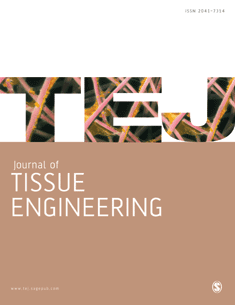
Journal of Tissue Engineering
Pioneering the Future of Regenerative MedicineThe Journal of Tissue Engineering, published by SAGE Publications Inc., stands at the forefront of innovation in the interdisciplinary fields of biomaterials and biomedical engineering. Established as an open access journal since 2010, it has quickly ascended to a leading position, as evidenced by its impressive rankings in 2023: Q1 in Biomaterials, Q1 in Biomedical Engineering, and Q1 in Medicine (miscellaneous). With a current impact factor that underscores its academic influence, this journal provides a vital platform for researchers, professionals, and students to share groundbreaking discoveries and advancements in tissue engineering and regenerative medicine. Located in the United Kingdom, the journal fosters a global dialogue with its robust publications and rigorous peer-review process, contributing significantly to the enhancement and understanding of complex biological systems. Join the esteemed community of thought leaders and innovators shaping the future of healthcare through the Journal of Tissue Engineering.
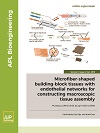
APL Bioengineering
Advancing Bioengineering for a Healthier TomorrowAPL Bioengineering is a premier open-access journal published by AIP Publishing, dedicated to advancing the field of bioengineering and its interdisciplinary applications. Established in 2017, this journal serves as a vital platform for researchers, professionals, and students interested in the critical intersections of bioengineering, biomaterials, biomedical engineering, and biophysics. With an impressive impact factor and consistent rankings in the Q1 category across multiple domains, including biochemistry and materials science, APL Bioengineering has positioned itself among the top journals in its field. The journal aims to publish innovative original research, comprehensive reviews, and insightful case studies that further the understanding and application of bioengineering principles. Since its inception, APL Bioengineering has fostered a community of thought leaders, providing open access to ensure broad dissemination of knowledge and advancements that underpin the future of biomedical innovation.

Materials Today Bio
Fostering collaboration in the rapidly evolving world of bio-related sciences.Materials Today Bio, published by Elsevier, is an esteemed open-access journal dedicated to advancing the fields of bioengineering, biomaterials, and biomedical engineering. Since its inception in 2019, this journal has quickly made a name for itself, currently ranked Q1 in multiple categories including Bioengineering, Biomaterials, and Biotechnology, reflecting its exceptional quality and relevance in the rapidly evolving landscape of bio-related sciences. With an impressive Scopus ranking positioning it in the top 25% of its categories, Materials Today Bio provides a vital platform for researchers and professionals to share cutting-edge discoveries and innovative applications that bridge the gap between materials science and biological studies. Accessible to a global audience, this journal not only fosters collaboration among the scientific community but also aims to highlight significant advancements in cell and molecular biology, making it an indispensable resource for students and seasoned experts alike. The journal's commitment to open access since 2019 underscores its dedication to disseminating knowledge widely, ensuring that crucial findings reach those who can benefit from them the most.
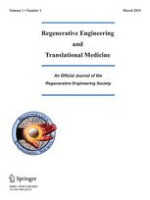
Regenerative Engineering and Translational Medicine
Innovating Biomaterials for Tomorrow's TherapiesRegenerative Engineering and Translational Medicine is an esteemed academic journal published by Springer Heidelberg, focusing on the interdisciplinary fields of biomaterials, biomedical engineering, and cell biology. With an ISSN of 2364-4133 and an E-ISSN of 2364-4141, the journal has carved a niche for itself since its inception in 2015, showcasing cutting-edge research that bridges the gap between scientific findings and practical applications in regenerative medicine. As a recognized platform in its field, it is currently positioned within Q3 quartiles in biomaterials, biomedical engineering, and medicine (miscellaneous), with a Scopus ranking that reflects its growing influence among peers. The journal aims to disseminate high-quality, peer-reviewed articles that highlight advancements in regenerative engineering, further advancing both theoretical and applied research. Scholars and practitioners seeking to stay at the forefront of the ever-evolving landscape of regenerative health solutions will find invaluable insights and innovations within these pages. Join a community of leading thinkers and explore the journal's comprehensive research contributions, which are crucial for fostering partnerships between academia and industry in the quest for transformative medical solutions.
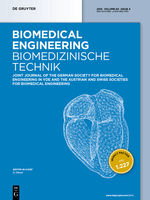
Biomedical Engineering-Biomedizinische Technik
Advancing Biomedical Innovation for a Healthier TomorrowBiomedical Engineering-Biomedizinische Technik, published by WALTER DE GRUYTER GMBH, serves as a pivotal platform for advancing knowledge in the field of biomedical engineering and medicine since its inception in 1956. With an ISSN of 0013-5585 and an E-ISSN of 1862-278X, this peer-reviewed journal offers accessible insights into innovative research and technological advancements that are reshaping healthcare practices and biomedical applications. Although rated in the Q3 category for both Biomedical Engineering and Miscellaneous Medicine in 2023, the journal's impact factor and growing reputation demonstrate its vital role in fostering academic dialogue and collaboration. The journal is based in Germany, while its scope encompasses a diverse range of topics, thus bridging the gap between engineering and medical disciplines. Researchers, professionals, and students alike are encouraged to engage with the content that not only highlights contemporary challenges but also presents groundbreaking solutions in biomedical technology.

Bioengineering & Translational Medicine
Advancing Biomedical Discoveries for Better HealthBioengineering & Translational Medicine, published by WILEY, positions itself at the forefront of innovation in the fields of biomedical engineering, biotechnology, and pharmaceutical science. With an impressive impact factor reflected through its top-tier Q1 rankings in multiple categories, the journal serves as a critical platform for disseminating cutting-edge research and stimulating discourse among professionals and scholars since its establishment as an open-access journal in 2016. Key to its mission is facilitating the translation of bioengineering research into tangible medical applications, thereby enhancing healthcare outcomes. With its comprehensive scope, it attracts a diverse readership, including researchers, industry leaders, and students eager to engage with the latest developments in translational medicine. The journal operates under robust access options, ensuring that research is freely available for maximum reach and impact, fostering collaboration and innovation across disciplines worldwide.

Advanced Biology
Fostering Collaboration for Scientific BreakthroughsAdvanced Biology, published by WILEY-V C H VERLAG GMBH, serves as a premier platform where innovative research and scientific breakthroughs in the fields of biochemistry, genetics, and molecular biology converge. Established in 2021, this journal has rapidly ascended to prominence, securing Q1 rankings in its primary categories, including general biochemistry and biomedical engineering, and a solid Q2 ranking in biomaterials. With an ISSN of 2701-0198 and an emphasis on open access, Advanced Biology ensures that rigorous peer-reviewed research is accessible to a global audience, enhancing visibility and fostering collaboration among researchers, professionals, and students alike. By 2024, it aims to continually elevate scientific understanding and innovation, catering to the growing interdisciplinary nature of these critical fields. With Scopus rankings placing it amongst the top quartiles in its disciplines, Advanced Biology is poised to make significant contributions to the future of life sciences.

International Journal of Bioprinting
Exploring the frontiers of bioprinting and biotechnology.The International Journal of Bioprinting, published by Accscience Publishing, is a pioneering platform dedicated to advancing the field of bioprinting and its applications in biotechnology and manufacturing engineering. Established in 2015, this journal has quickly gained recognition, reflected in its prestigious placements within the Q1 and Q2 quartiles across various categories, including Industrial and Manufacturing Engineering, Biotechnology, and Materials Science. With *Scopus rankings* placing it in the top percentiles of its respective fields, the journal aims to provide researchers, professionals, and students with cutting-edge insights and innovative methodologies that drive the evolution of bioprinting technologies. The International Journal of Bioprinting not only facilitates access to high-quality, peer-reviewed research articles but also supports the rapidly growing community dedicated to the exploration of bioprinting applications, making it an essential resource for those on the forefront of this exciting scientific frontier.
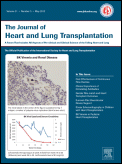
JOURNAL OF HEART AND LUNG TRANSPLANTATION
Driving Excellence in Transplantation Research and PracticeJOURNAL OF HEART AND LUNG TRANSPLANTATION, published by Elsevier Science Inc., serves as a premier platform for researchers and clinicians in the fields of Cardiology, Cardiovascular Medicine, Pulmonary and Respiratory Medicine, Surgery, and Transplantation. Since its inception in 1991, this esteemed journal has maintained a robust impact within the scientific community, currently holding a remarkable Q1 ranking in multiple categories as of 2023, indicative of its influential contributions to the field. With Scopus rankings placing it among the top ten in Surgery and fourth in Transplantation, it is essential reading for those looking to stay at the forefront of innovative transplantation techniques and cardiovascular research. Although not an open access journal, its rich content is crucial for advancing knowledge and promoting best practices, making it indispensable for professionals, students, and researchers dedicated to the life-saving field of heart and lung transplantation. The journal continues to foster academic excellence and facilitate impactful research, addressing contemporary challenges and innovations within these critical areas.